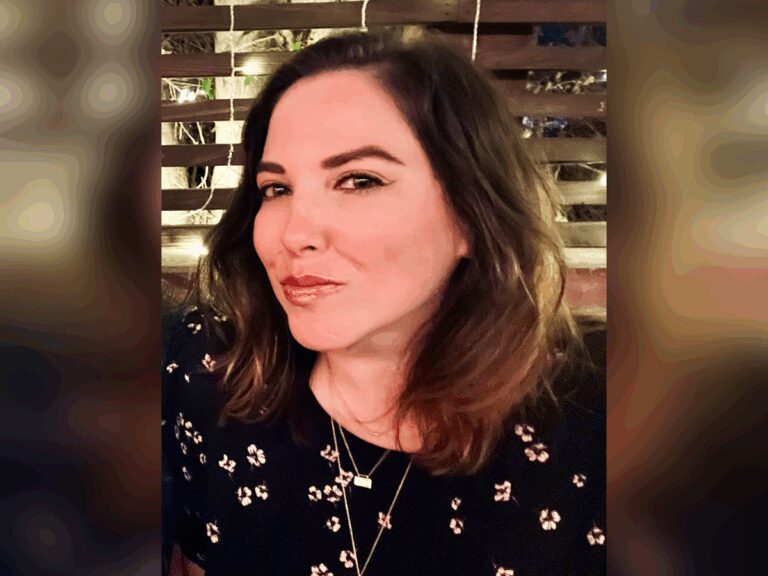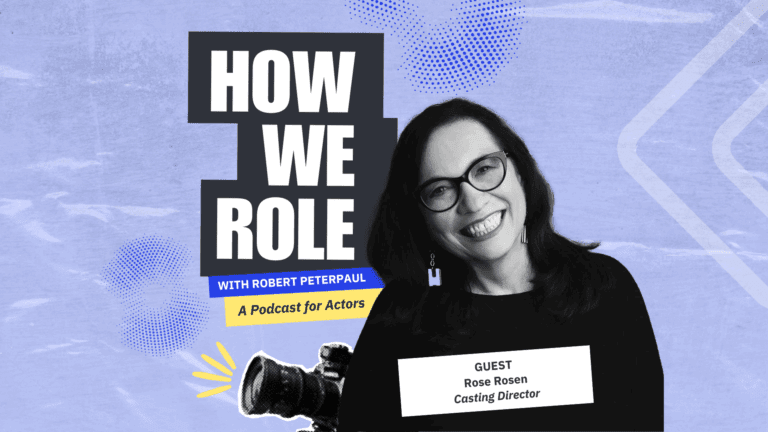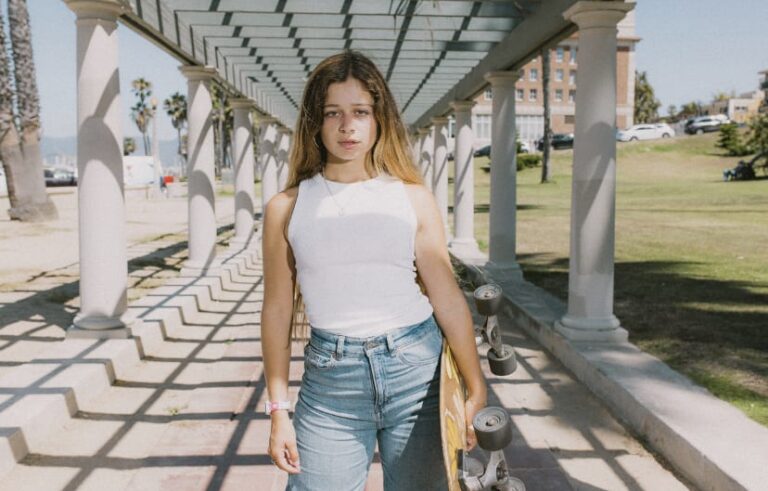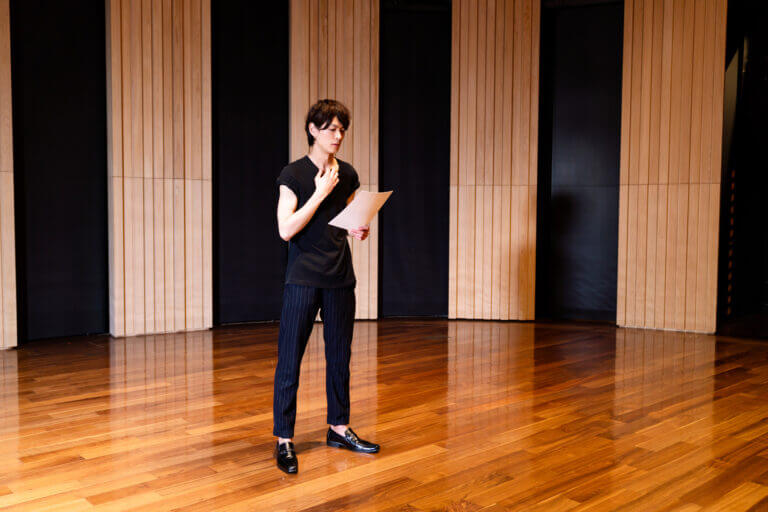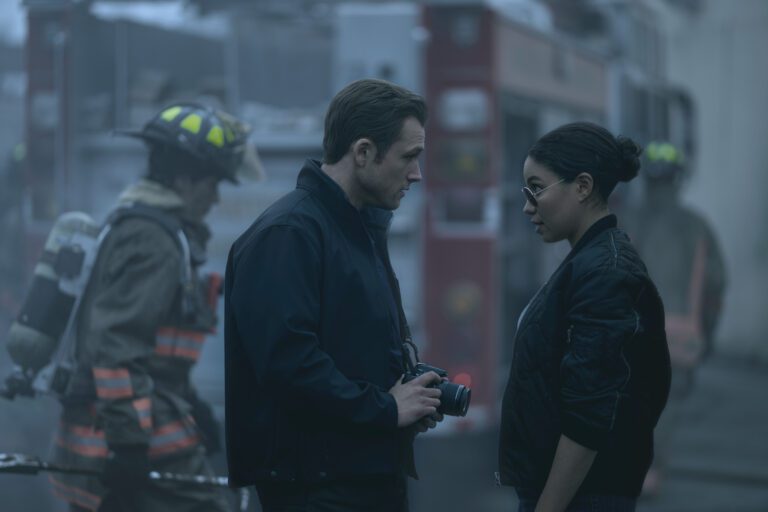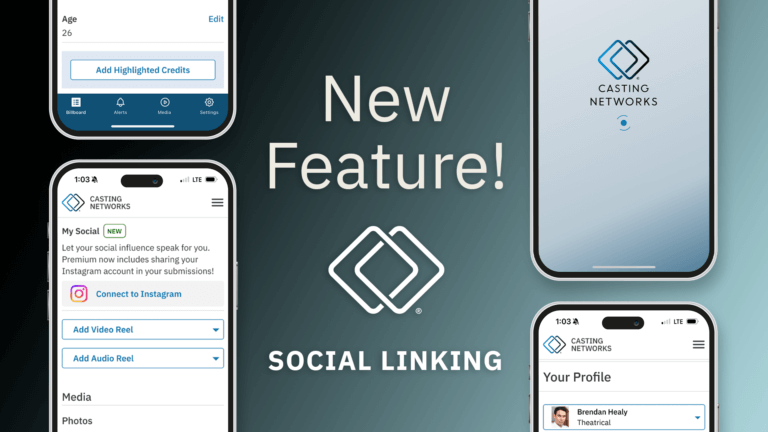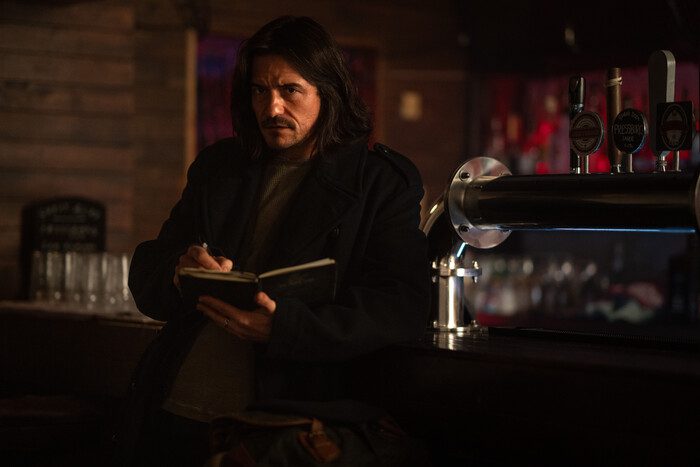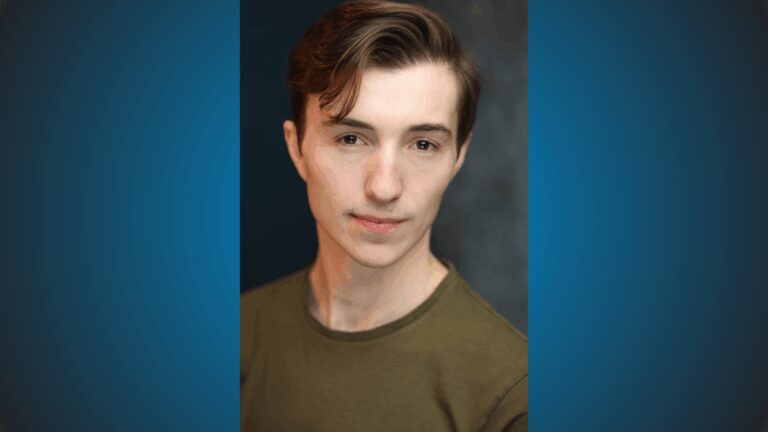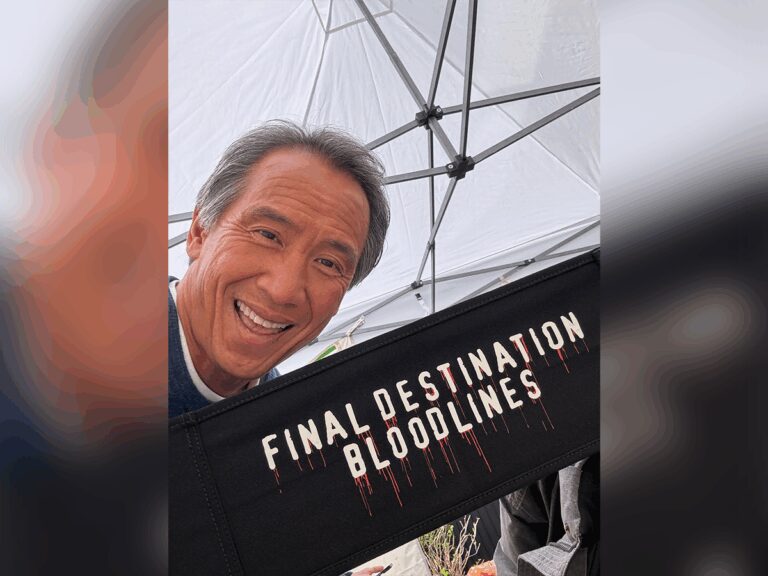Lisa Gilroy is an actor who’s appeared on series like Fox’s Brooklyn Nine-Nine and recently lent her voice to Comedy Central’s upcoming animated series Fairview. She’s also a creator who’s reached influencer status on both Instagram and TikTok, with more than 100,000 followers on both platforms. Popular videos include those within Gilroy’s #conversationswithmyperiod series, also known as Cutie Girl. With a busy slate, the actor/creator took time out to virtually sit down with Casting Networks and share some insights about her journey and how it all started.
It’s great to virtually meet you, Lisa, and I’d love to start right at the beginning. Can you share the “origin story” of how you began creating your own content that led to your current status as an influencer?
Well, I was born with a black heart filled with insecurity, which is the real start of it all. [Laughs] Then in the pandemic, I started getting really deep into the PlayStation game Stardew Valley, in which I became a sweet little farmer on my sweet little farm. And when my partner and I would take our nightly walk during quarantine to be out in nature for a few minutes — 11 minutes around the block, to be exact — the game was my main contribution to the conversation. I’d be like, “I sold watermelons for a pretty penny at the fair today and gave my biggest pumpkin to my neighbor Julian, and now he’s my boyfriend.” So after playing Stardew for approximately a full calendar year, I started looking back at my big, stupidly audacious list of goals from 2020. You know, the one you made before the pandemic that then immediately turned to trash.
Oh, I know it well, Lisa.
Mine had this list of all the shows I wanted to do. Before quarantine, I was performing live at least three times a week. I was doing Harold Night and Maude Night at UCB [Upright Citizens Brigade] and had a one-woman show that I had just started touring. I was two shows into that before it was canceled due to the pandemic. So I thought about how I could feed those comedian and performer parts of me. The clear answer seemed to be Zoom shows, which are just a special kind of self-punishment. Basically, you go to this place where no one laughs and you can barely hear what anyone else is saying. Then it’s over, and there’s no green room for you to sit in and talk to your friends about the show over a beer. You just click “Leave Meeting” when it’s done, and suddenly you’re alone in your cold, dark bedroom thinking about the choices you made. It’s terrible. So I did that for a while before realizing it wasn’t fulfilling the part of me that needs to clown around. That’s when I started making videos.
Wow. Thank you for that insight — performing in Zoom shows just made my list of things I never need to try. So after you started making videos, when did they take off?
I was making one video a week, and it was my third or fourth video that blew up. I was being interviewed on a podcast and literally telling the host that I didn’t know how people successfully do things on the internet or how things go viral. After I got done doing the interview, I checked my phone and saw that I’d received a bunch of texts. It turned out that within an hour, one of my videos had gotten about 100,000 likes on Twitter. So that was kind of when I realized there was an audience for what I was putting out, right when I was talking s–t about the internet at large on a podcast.
What a fantastic, the-truth-is-better-than-fiction story of your first video that took off. And what can you tell us about your process for making videos?
Well, I used to work for The Second City in Toronto, and I’ve been doing sketch comedy for years, which means you always keep a running note in your phone of anything that strikes you as remotely funny. So back in the day, I’d write down an idea and then pitch it at a pitch meeting where it would get analyzed by other people. Then if it moved forward, the idea would get written, rehearsed, and performed. So I essentially use the same process, but now it’s just me and my stupid phone. There are no trusted peers at a pitch meeting to tell me if an idea’s truly terrible. And if an idea comes while I’m at home, I don’t even write it down. I just stand up, walk like a possessed zombie into my bedroom, and open my little Tupperware bin of wigs. I love an itchy, stinky little polyester wig, and I have many of them. So I’ll put one on and then pretty much just improvise the character. I’ll easily record 30 clips just to make a 30-second video. When that’s done, I just dump everything into iMovie and delete anything that makes no human sense. I try to put the final video together in some sort of thematic way in which the character and the jokes work. Then I post it. So basically, the process is chaotic and fast and a bit of a possession.
[Laughs] It seems to work really well for you, though. Switching gears here, I have one last question that deals with a weird idea in the comedy world that people can be perceived as “too pretty” to be funny. Please only answer if you feel comfortable with it, but I’m wondering if you’ve experienced that notion since you seem like you’d fit the traditional “leading lady” type.
For TV comedies, it seems like they’re very much trying to represent all different types of people, and I don’t really feel that dynamic there. I may get cast as the pageant queen or stupid yoga teacher, but those are parts of my personality, as well. [Laughs] In terms of a general dynamic regarding appearance and comedy, though, I probably noticed it most when I first began doing improv and sketch. I was performing at The Second City and new to Toronto so I didn’t know anyone yet and couldn’t form a team of people to do improv with. So I was doing what may best be described as theater sports. It’s a type of improv in which you’re facing off against other people to be the funniest, similar to Whose Line Is It Anyway?. So I would show up by myself to compete, and that’s when I experienced a bit of that dynamic you mentioned. Like if a big guy with glasses and a giant beard came out on stage, the crowd was immediately all for it. “F–k yes, we love him,” was the general sentiment. “He’s Seth Rogen. He’s our king. We will worship him now.” When I came out, the reaction was more like, “Who’s this girl? Does she work at SoulCycle? Let’s kill her.” [Laughs]
It sounds like there can be a certain disparity with how comedians are perceived.
It can feel like there’s a bias or some entrenched misogyny that women have to fight against in comedy. But that particular experience actually shaped my style. I learned to come out loud and hard with a big character, like a troll or a goblin or some cave-dwelling creature. I wanted to surprise the audience and win them over quickly. And I might do that by walking around on all fours, on my knuckles, screaming like a banshee. You know, I’d try and shake them up a little to consider that maybe I’m not who they think I am. [Laughs] Perhaps it’s made me a bit of an obnoxious improviser, but fighting against that bias has served me, and a lot of my current characters come from that same style I built back then.
Those interested in learning more about the creator can check out her website. You can also find her on Twitter as @TheLisaGilroy. And before we wrapped the interview, the comedian demonstrated her ability with improv in response to a comparison between her self-described “chaotic” process and Adele’s first time on Instagram Live. “Yes, I’m just exactly like Adele,” Gilroy deadpanned. “She and I have the same talent level and the same beauty and the same singing voice. I don’t show off my singing voice a lot, but it’s very similar so thank you for pointing that out. I feel like a lot of people don’t often say how closely I resemble Adele, and I appreciate you really calling out the elephant in the room. Thank you — this is like the only good interview I’ve ever had.”
—
This interview has been edited and condensed.
